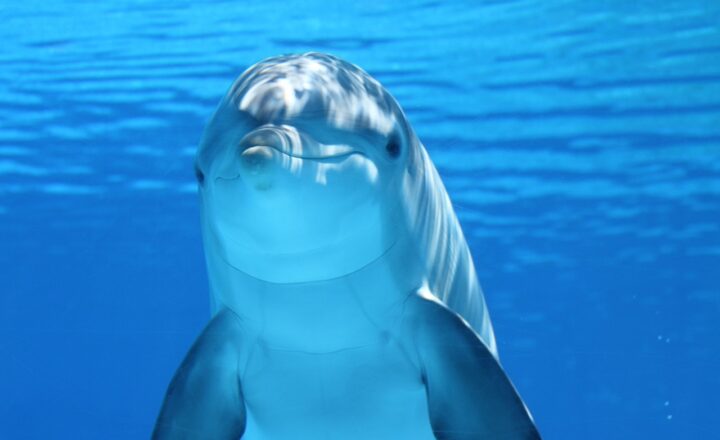Ancient Sharks and Other Predators of the Paleozoic Sea: Who Ruled the Waters?
November 14, 2024

The Paleozoic Era, encompassing an extensive time period from approximately 541 to 252 million years ago, is famed for its incredible diversity of life forms, particularly in its oceans. Among these life forms stood an astounding array of marine predators, including some of the earliest sharks and other formidable aquatic creatures that roamed the prehistoric seas. This article dives deep into the ancient waters to explore who ruled as the dominant predators of the Paleozoic seas.
1. A Glimpse into the Paleozoic Era
The Paleozoic Era is marked by dramatic changes in geography, climate, and biology. It witnessed the Cambrian Explosion, when life diversified rapidly, and culminated in the Permian Period, known for the largest mass extinction in Earth’s history. The oceans during this time were dominated by various marine ecosystems, home to both primitive and advanced forms of marine life.
The Paleozoic seas were teeming with a wide variety of organisms, including:
- Trilobites: These arthropods were among the most successful marine animals, often scuttling along the ocean floor and serving as a significant food source for larger predators.
- Brachiopods: Shellfish that resembled clams, these creatures proliferated in shallow sea beds and played an essential role in marine ecosystems.
- Corals: Early corals formed reefs that provided habitats for many marine species.
However, it was the predators that truly captured the imagination of scientists and enthusiasts alike.
2. The Rise of Sharks in the Paleozoic Seas
Modern sharks evolved from ancestors found in the Paleozoic Era, with some of the earliest sharks appearing in the late Devonian period, around 400 million years ago. These early sharks were not the sleek designs of today but rather brutish hunters with an array of unique adaptations suited for survival in their turbulent marine environments.
One prime example is Dunkleosteus, a massive placoderm fish that reached lengths of over 30 feet. Though not technically a shark, Dunkleosteus’s formidable jaw structure and armored plating made it one of the apex predators of its time. It had teeth that were more akin to shears than those of modern sharks, allowing it to slice through prey with brute force.
Additionally, several genera of ancient sharks began to diversify:
- Cladoselache: This early shark existed during the Late Devonian and was characterized by a streamlined body and multiple dorsal fins, indicating it was a fast and agile predator.
- Stethacanthus: Known for its distinctive dorsal fin resembling an anvil, this late Paleozoic shark was likely a strong swimmer and may have preyed on smaller fish and invertebrates.
- Onychodus: As a lobe-finned fish, Onychodus had both characteristics of sharks and modern bony fish, showcasing the evolutionary transitional path of marine predators.
The adaptations of these sharks symbolize the rapid evolutionary advancements that occurred during this era, setting the stage for the subsequent evolution of marine life.
3. Other Apex Predators of the Paleozoic Oceans
While ancient sharks hold a notable presence, several other marine predators also claimed their place in the ancient oceans. Among them:
- Anomalocaris: Often regarded as one of the earliest apex predators, Anomalocaris was a formidable creature characterized by large, compound eyes and substantial appendages used for grasping prey. It swam in the Cambrian seas, devouring trilobites and other marine organisms.
- Megalodon: Though not strictly Paleozoic, this giant shark emerged later but is often discussed due to its monstrous size and predatory prowess. It served as a fearsome predator in the oceans millions of years after the Paleozoic Era.
- Plesiosaur: A marine reptile from a much later period (Mesozoic Era), the Plesiosaur showcased the evolutionary path marine predators would take after the Paleozoic, exhibiting adaptations for large-scale predation in the oceans.
These predators must have played critical roles in shaping the ecosystems of the Paleozoic seas, influencing the development of prey species as well as the overall biological community structure.
4. The Extinction of Paleozoic Predators
As the Paleozoic Era drew to a close, significant environmental changes culminated in the Permian-Triassic extinction event around 252 million years ago. This event led to the largest mass extinction in Earth’s history, wiping out approximately 90% of marine species and drastically altering the face of the oceans.
The changes included:
- Severe Climate Shifts: Rapid shifts in climate, including volcanic activity and massive changes in ocean chemistry, created uninhabitable conditions for many marine organisms.
- Loss of Biodiversity: The combination of habitat loss and changing environmental conditions abducted diverse marine species, including many dominant predators.
The extinction event not only ended the reign of the Paleozoic sea monsters but also paved the way for the evolution of new species, leading to the beginnings of the Mesozoic Era, often dubbed the “Age of Dinosaurs.”
Conclusion
The ancient predators of the Paleozoic seas exhibit a fascinating evolution of marine life and adaptation strategies that set the groundwork for future ecosystems. From the early ancestors of sharks to formidable predators like Anomalocaris, these creatures crafted a diverse and competitive marine environment.
As scientists continue to explore these ancient oceans’ mysteries, we gain a deeper understanding of our planet’s evolutionary history, inspiring us to marvel at the complex tapestry of life that was once submerged under the prehistoric waters. Future generations will continue to learn from these ancient behemoths of the deep, recognizing the power of adaptation and survival.








